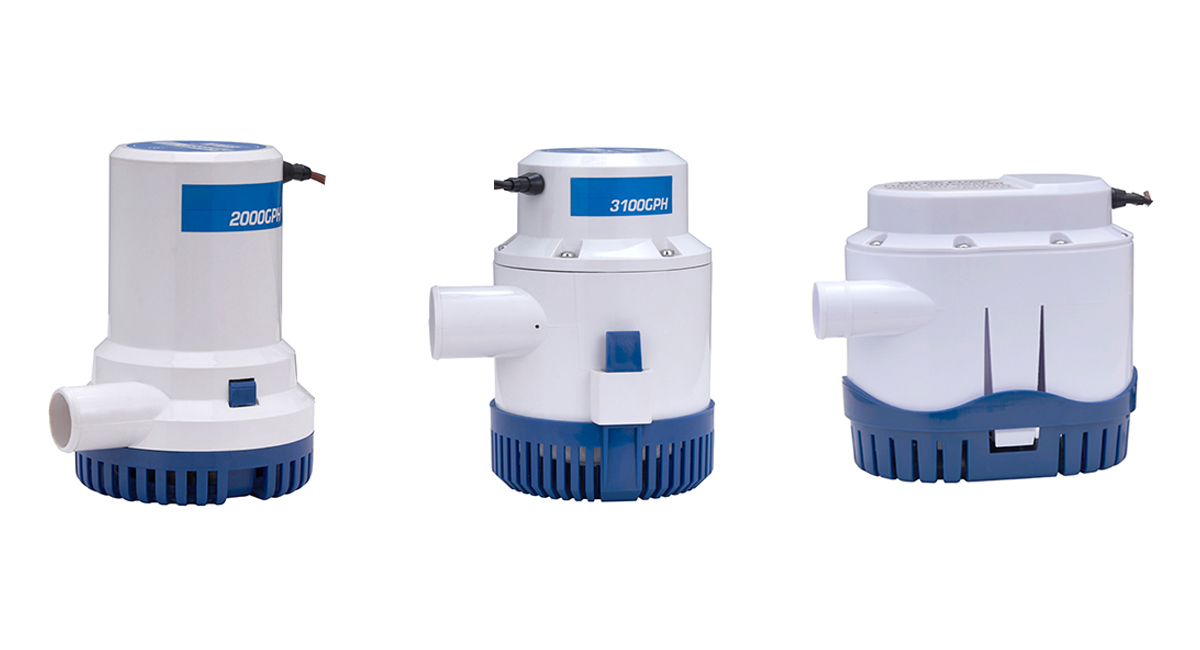- English
- Español
- Português
- русский
- Français
- 日本語
- Deutsch
- tiếng Việt
- Italiano
- Nederlands
- ภาษาไทย
- Polski
- 한국어
- Svenska
- magyar
- Malay
- বাংলা ভাষার
- Dansk
- Suomi
- हिन्दी
- Pilipino
- Türkçe
- Gaeilge
- العربية
- Indonesia
- Norsk
- تمل
- český
- ελληνικά
- український
- Javanese
- فارسی
- தமிழ்
- తెలుగు
- नेपाली
- Burmese
- български
- ລາວ
- Latine
- Қазақша
- Euskal
- Azərbaycan
- Slovenský jazyk
- Македонски
- Lietuvos
- Eesti Keel
- Română
- Slovenski
- मराठी
- Srpski језик
Marine Bilge Pumps
2024-08-30
Like many pieces of safety equipment, bilge pumps simply don’t get the attention they deserve. Having the right bilge pump with the right features, and knowing how to properly use it, is critical to protecting your boat, equipment and passengers.
Even a small amount of water in the bilge of a boat can cause serious issues. Standing water on raw fiberglass can make it brittle over time, and many “wood-free boats” use foam filled stringers that can become saturated, heavy and weak if constantly submerged. Wiring and electrical connections will corrode quickly, impacting electronics, pumps, lights and even the electrical systems related to your engine. A properly installed and operated bilge pump will keep your bilge dry and your boat in good working order.
Although often small and installed out of sight, bilge pumps are installed in most boats to expel water that collects in the bottom of a boat (the “bilge”). Bilge pumps should always sit in the lowest part of the bilge when the boat is at rest. If possible, they should be installed in an easily accessible location so that you can frequently inspect, clean out, test and, if necessary, replace them.
Automatic vs. Manual pumps
Boats with open bilges, such as john boats or smaller skiffs without liners may only need a simple, manual pump turned on or off by the operator via a two position (on/off) switch. Boats with partially or fully enclosed bilge areas should have an automatic bilge pump to expel water when it may not be visible. Automatic pumps typically use some kind of float switch or water sensor, which will turn the pump on when the water level in the bilge reaches a certain point.
Types of Automatic Bilge Pumps
While manual bilge pumps operate from a console or accessory panel switch, automatic bilge pumps generally have two switches that activate them - one on the console or accessory panel and a separate switch or sensor on the pump itself to activate and deactivate the pump based on the water level in the bilge. These bilge pumps use different mechanisms to activate them when left in automatic mode:
Hinged Float Switch:
The most common design uses a hinged, floating arm attached to the pump housing. This arm floats up when there is water in the bilge, activating the pump, and, as the water level drops, turns the pump off again.
Ball Float Switch:
Another common design are bilge pumps that incorporate a floating ball into the pump housing. As the water rises, the ball floats up, eventually activating a switch that turns on the pump. This style uses less space in the bilge than a hinged float switch.
Water Sensors:
Some automatic pumps use sensors instead of mechanical switches to activate the pump. Like ball float switch pumps, these pumps typically have smaller dimensions and work well for tighter spaces. Some of these have built-in buttons to test the pump to ensure it is working properly.





